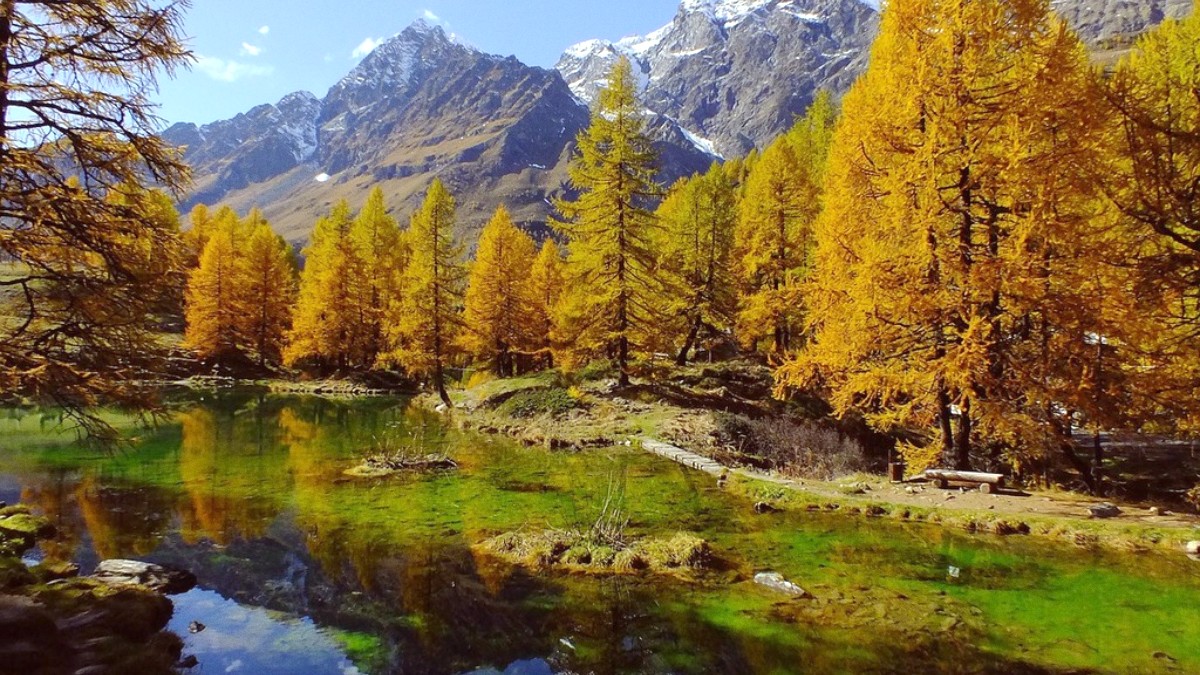
Liguria Piedmont And Valle Daosta, Italy
The Aosta Valley’s cuisine emerged from necessity in a high-altitude, cold environment. Dishes are robust, designed to deliver warmth and energy. Centuries of isolation led to reliance on locally sourced ingredients: dairy, cured meats, potatoes, polenta, and game.
A strong French influence is present in naming conventions and cooking methods, creating a rustic yet refined culinary tradition.
Lunch is typically served from 12:30 PM to 2:30 PM. Dinner generally starts around 7:30 PM and continues until 10:00 PM. Many restaurants close between lunch and dinner service.
A "coperto" (cover charge per person, €1-€3) or "servizio" (service charge, 10-15%) might be added to your bill. Check the menu for this. No additional tip is necessary if "servizio" is included. Meals traditionally feature multiple courses, but ordering a "primo" and a "secondo" is common.
Bread is usually served at the table, often included in the "coperto." Italians typically drink espresso after a meal. Cappuccinos are usually a breakfast beverage.
A rich, creamy cheese fondue featuring local Fontina cheese, milk, and often egg yolks. A staple for experiencing Fontina.
Find it in traditional restaurants and trattorias across Aosta and the valley.
Creamy polenta layered with generous Fontina cheese and butter, then baked. A comforting and satisfying dish.
Widely present in traditional eateries as a side or main.
A robust beef or venison stew, slow-braised in local red wine, often with juniper berries. Frequently served with creamy polenta.
Excellent for a hearty meal after a day in the mountains.
Italy's smallest wine region. Discover local reds like Enfer d'Arvier, Donnas, and Torrette. Try Blanc de Morgex et de La Salle for whites.
Genepy is an Alpine liqueur, often enjoyed as a digestivo. Various local grappa varieties are present.
Aosta city has upscale restaurants concentrating on refined Valdostan and Italian cuisine, often with elegant atmospheres and extensive wine lists.
These are widely available throughout Aosta and larger towns. They present traditional dishes in comfortable settings, delivering a good balance of quality and price.
Pizzerias deliver an affordable and satisfying meal. Many bars present sandwiches or light snacks. For the lowest cost, purchase groceries from local supermarkets.
Vegetarian options are growing, especially in larger towns. Traditional cuisine is often meat and cheese-heavy, but many restaurants can adapt dishes or present pasta and vegetable-based meals.
Vegan options might require more searching, specifically in very traditional or rural eateries. Communicate your needs clearly.
Awareness of gluten-free ("senza glutine") and other allergies is growing. Major restaurants might present gluten-free pasta or bread. Always inform staff clearly about your allergies.
A translation card explaining your specific dietary needs in Italian (and possibly French) can be useful.
Learn to prepare traditional dishes like Fonduta alla Valdostana.
Tour agriturismos, sample products, and learn about local farming.
Taste unique high-altitude wines directly at local vineyards.
Dine in high-altitude mountain huts for an unique experience.
A dessert from sweetened chestnut purée, often flavored with rum or vanilla, topped with whipped cream.
A delightful, rich sweet treat.
The Aosta Valley delivers various types of high-quality local honey, reflecting diverse Alpine flora.
A perfect natural souvenir.
Street food is less common. Find cured meats or cheeses at markets. Bakeries offer pizza slices or focaccia.
While Aosta Valley concentrates on Italian and local cuisine, a limited selection of international restaurants (e.g., Chinese, Japanese) exists in Aosta city.
Some hotels or specialized tour operators present cooking classes focused on Valdostan cuisine. Learn to prepare traditional dishes like Fontina fondue or gnocchi.
Many agriturismos present tours or tastings of their products, supplying insight into local farming and food production.
Various seasonal food festivals happen throughout the year, celebrating specific products like chestnuts, apples, or cheese.
For authentic local food products like Fontina cheese, Jambon de Bosses, and Lardo d'Arnad, look for the "DOP" (Denominazione di Origine Protetta) label. This label guarantees origin and quality, supporting regional standards.
A marker of genuine regional specialties.
This connection enriches your travel experience.
A mindful approach to dining.
While English menus are present in tourist areas, a translation app for specific dishes or ingredients is useful in smaller, more traditional eateries.
Visit the Mercato Coperto or outdoor market early for the best selection of fresh, seasonal produce and local specialties.
Embrace the Italian coffee ritual: espresso (caffè) after meals, cappuccino only in the morning.
Beyond the famous dishes, seek out smaller, local bakeries or delis for unique regional pastries and cured meats. Often, these unassuming spots contain some of the most authentic flavors.